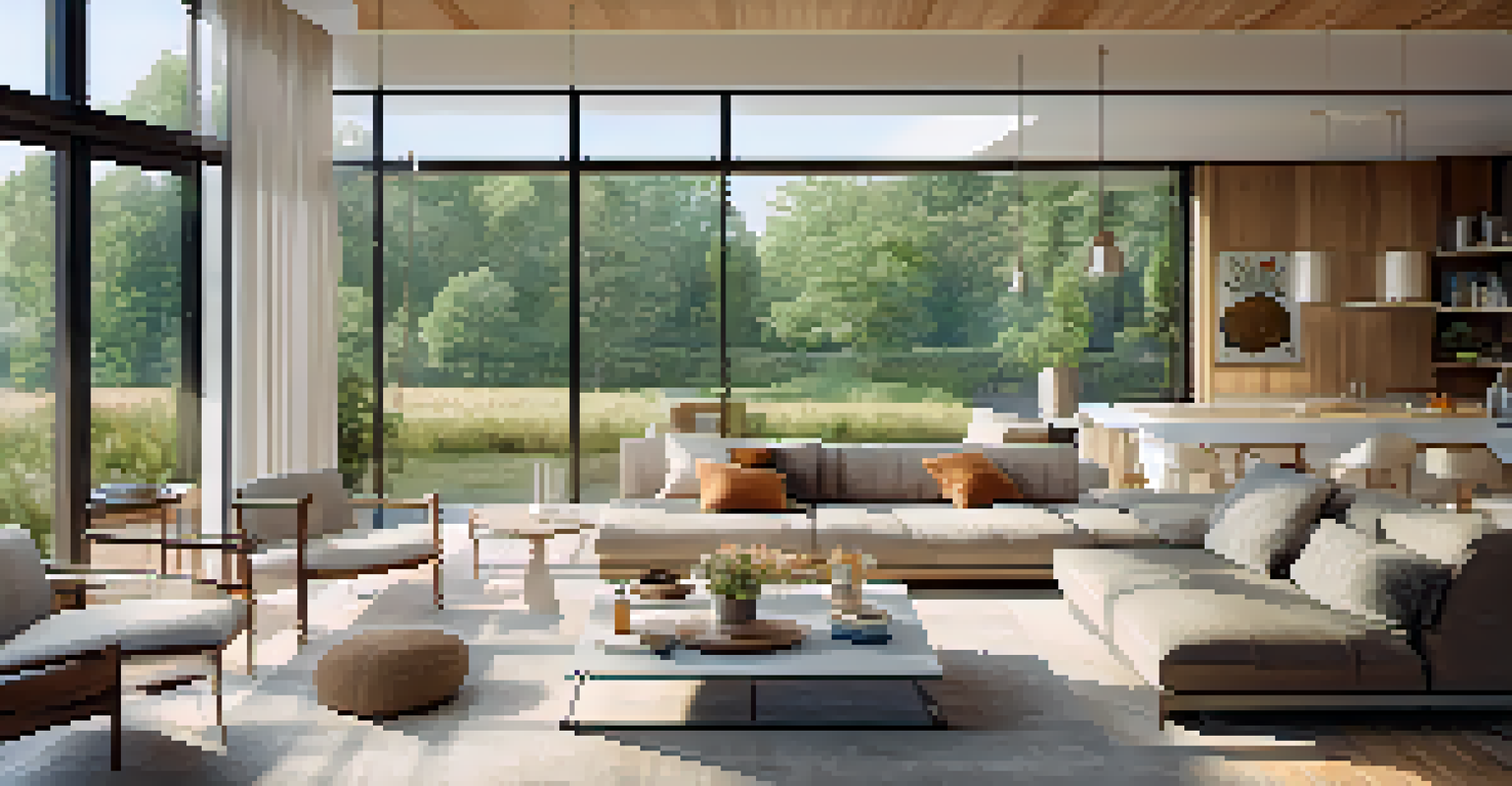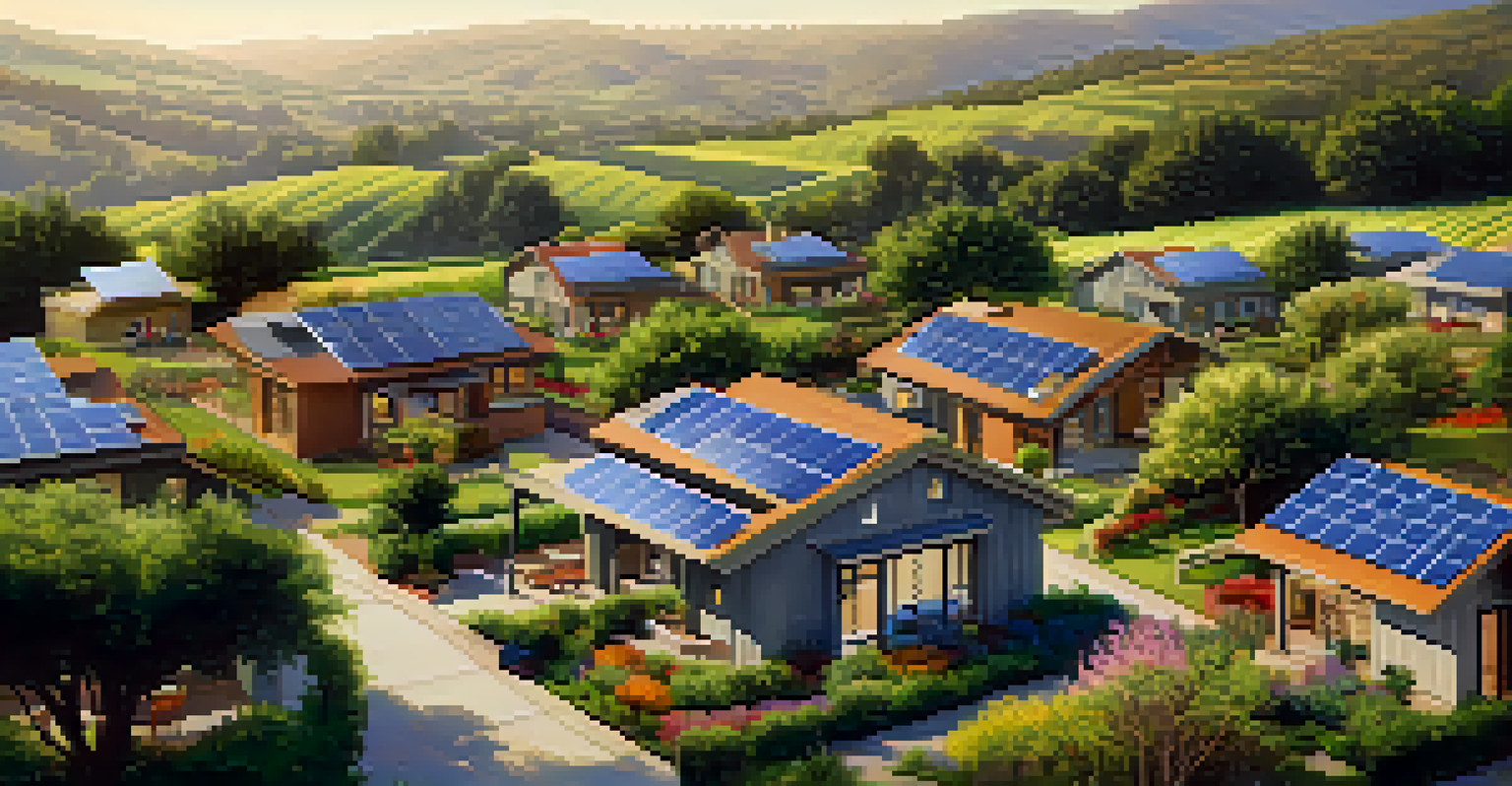Exploring Zero Energy Buildings in California: A New Frontier

What Are Zero Energy Buildings (ZEBs)?
Zero Energy Buildings (ZEBs) are structures that produce as much energy as they consume over a year. Imagine a home that generates its own electricity, thanks to solar panels and efficient energy use. This concept not only helps reduce utility bills but also contributes significantly to a sustainable future.
The future will be green, or not at all.
In California, the push for ZEBs comes from a desire to combat climate change and promote energy independence. These buildings are designed with energy-efficient features such as advanced insulation, smart appliances, and renewable energy sources. They exemplify how modern architecture can harmonize with nature while meeting our energy needs.
As the state leads the nation in green building initiatives, ZEBs represent a pioneering shift in how we think about energy consumption. The goal is not just to create eco-friendly structures, but to inspire a whole new way of living that prioritizes sustainability.
The Benefits of Zero Energy Buildings
Living in a Zero Energy Building comes with numerous benefits, starting with lower energy costs. Homeowners can save thousands over time since these buildings generate their own power, reducing reliance on the grid. This financial relief can be a game-changer, especially in California where energy prices can be steep.

Additionally, ZEBs offer enhanced comfort and health benefits. With better insulation and air quality systems, these buildings provide a more stable and pleasant living environment. You can think of it as living in a cozy, energy-efficient cocoon that keeps you comfortable all year round.
ZEBs: Energy Self-Sufficient Homes
Zero Energy Buildings (ZEBs) produce as much energy as they consume, promoting sustainability and reducing utility costs.
Moreover, ZEBs contribute positively to the environment. By minimizing carbon footprints and utilizing renewable resources, they play a vital role in addressing climate change. Every ZEB built is a step toward a cleaner, greener California, demonstrating that sustainable living is not just an ideal but an achievable reality.
California's Commitment to ZEBs
California has set ambitious goals to increase the number of Zero Energy Buildings across the state. The state's building codes are evolving to mandate higher energy efficiency standards, making ZEBs not just an option but a necessity. This commitment aligns with California's broader vision of reducing greenhouse gas emissions and transitioning to renewable energy sources.
We cannot solve our problems with the same thinking we used when we created them.
Local governments are also stepping up, providing incentives for developers and homeowners to invest in ZEB technology. These incentives can range from tax breaks to grants for energy-efficient upgrades, making it easier for people to take the plunge. This collaborative effort between the state and local authorities is crucial for achieving widespread adoption of ZEBs.
As more ZEBs are constructed, California is poised to lead by example on a national level. The success of these buildings could inspire other states to follow suit, ultimately creating a ripple effect in the fight against climate change. It's an exciting time for sustainable architecture, and California is at the forefront of this movement.
Innovative Technologies Driving ZEBs
The rise of Zero Energy Buildings is largely fueled by innovative technologies. From solar panels to energy-efficient HVAC systems, these advancements are making it easier to create homes that are both comfortable and sustainable. Imagine a home that not only produces energy but also learns your habits to optimize usage—this is the future of ZEBs.
Smart home technology plays a crucial role in monitoring energy consumption and managing resources effectively. Homeowners can track their energy use through apps, making it easier to identify areas for improvement. This level of control empowers residents to make informed decisions about their energy consumption, further enhancing the ZEB concept.
California's Push for ZEB Adoption
California is committed to increasing ZEBs through evolving building codes and local incentives, aiming to lead the nation in green building initiatives.
Additionally, advances in building materials, such as highly insulated windows and sustainable construction methods, contribute to the overall efficiency of ZEBs. These innovations not only reduce energy needs but also increase the longevity of buildings, ensuring they remain viable and environmentally friendly for years to come.
Challenges Facing Zero Energy Buildings
Despite the many advantages of Zero Energy Buildings, there are challenges to widespread adoption. One major hurdle is the initial cost of construction, which can be higher than traditional building methods. While long-term savings are often substantial, the upfront investment can deter some homeowners and developers from making the switch.
Furthermore, there is a need for more education and awareness about ZEBs. Many people are unfamiliar with the concept, and misconceptions can cloud their perception. By promoting success stories and showcasing the benefits of ZEBs, advocates can help demystify the process and encourage more people to consider these energy-efficient options.
Lastly, local regulations and building codes can pose barriers to ZEB implementation. Navigating the complexities of permits and approvals can be a daunting task for builders. Streamlining these processes and providing clearer guidelines would greatly aid in the expansion of ZEBs across California.
Case Studies: Successful ZEB Projects in California
California boasts several notable Zero Energy Building projects that showcase the potential of this innovative approach. For instance, the Bullitt Center in Seattle, often dubbed 'the greenest commercial building in the world,' serves as a model for sustainable design. Although not in California, its principles inspire local projects, demonstrating how ZEBs can function in diverse environments.
Closer to home, the net-zero community in Napa Valley highlights how ZEBs can be integrated into residential neighborhoods. With homes built to produce more energy than they consume, this community exemplifies the harmony of sustainability and livability. Residents enjoy the benefits of modern amenities while contributing to the environment, proving that eco-friendly living can be both practical and stylish.
Innovative Tech Fuels ZEB Growth
Advancements in technology, such as smart home systems and sustainable materials, are driving the development and efficiency of Zero Energy Buildings.
These case studies serve as beacons of inspiration, showing that Zero Energy Buildings are not just theoretical concepts but tangible realities. As more such projects emerge, they provide valuable insights and lessons for future developments, propelling California further along the path to a sustainable future.
The Future of Zero Energy Buildings in California
Looking ahead, the future of Zero Energy Buildings in California seems promising. With ongoing technological advancements and increasing awareness, more homeowners are likely to embrace energy-efficient living. As this trend continues, we can expect to see a shift in the real estate market, with ZEBs gaining popularity among buyers seeking sustainable options.
Government policies will also play a significant role in shaping the future of ZEBs. As laws become more stringent regarding energy efficiency, builders will be encouraged to adopt ZEB principles in their designs. This supportive regulatory environment will not only foster innovation but also ensure that sustainable practices become the norm rather than the exception.

Ultimately, the journey toward Zero Energy Buildings is about more than just energy savings; it's about creating a sustainable legacy for future generations. As California leads the charge, it sets an example for others to follow, paving the way for a greener, more sustainable world.